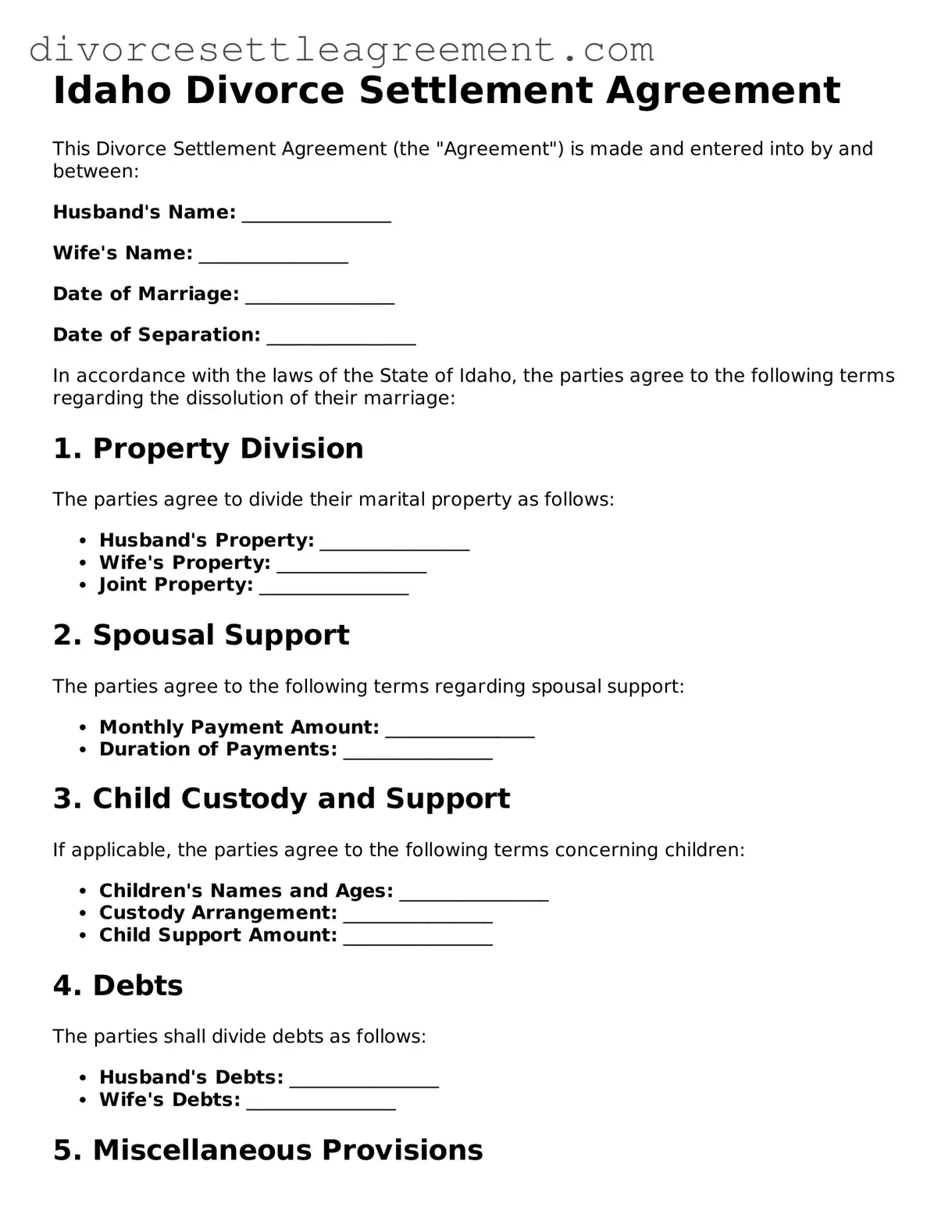What is an Idaho Divorce Settlement Agreement?
The Idaho Divorce Settlement Agreement is a legal document that outlines the terms of a divorce between two parties. It details how assets, debts, and responsibilities will be divided. This agreement helps ensure that both parties are on the same page regarding financial matters, child custody, and other important aspects of their separation.
Who needs to complete this form?
Both spouses involved in the divorce need to complete the Idaho Divorce Settlement Agreement. It is essential for couples who wish to settle their divorce amicably and avoid lengthy court battles. By working together to create this document, both parties can establish clear expectations and responsibilities moving forward.
What should be included in the Divorce Settlement Agreement?
The agreement should include several key elements. First, it must outline the division of marital property and debts. This includes real estate, vehicles, bank accounts, and any other shared assets. Additionally, if children are involved, the agreement should specify custody arrangements, visitation schedules, and child support obligations. It is also wise to include provisions for spousal support, if applicable.
Is the Divorce Settlement Agreement legally binding?
Yes, once both parties sign the Idaho Divorce Settlement Agreement, it becomes a legally binding contract. This means that both individuals are obligated to adhere to the terms outlined in the document. If one party fails to comply, the other party can seek legal recourse to enforce the agreement.
Can the Divorce Settlement Agreement be modified after it is signed?
Yes, the Divorce Settlement Agreement can be modified, but both parties must agree to any changes. If circumstances change significantly—such as a job loss or a change in custody needs—either party can request a modification. However, this typically requires a formal process, which may involve court approval.
How do I file the Divorce Settlement Agreement with the court?
After both parties have signed the agreement, it must be filed with the appropriate court in Idaho. This usually involves submitting the document along with any other required forms and paying a filing fee. It is important to ensure that the agreement is filed correctly to avoid any delays in the divorce process.
What happens if we cannot agree on the terms?
If both parties cannot reach an agreement on the terms of the divorce, they may need to seek mediation or court intervention. Mediation involves a neutral third party who helps facilitate discussions and negotiations. If mediation is unsuccessful, a judge may ultimately decide the terms of the divorce during a court hearing.
Do I need a lawyer to prepare the Divorce Settlement Agreement?
While it is not required to have a lawyer to prepare the Divorce Settlement Agreement, it is highly recommended. A legal professional can provide valuable guidance, ensure that the agreement complies with Idaho laws, and help protect your interests. If both parties are in agreement and straightforward in their divorce, they may choose to prepare the document without legal representation.
